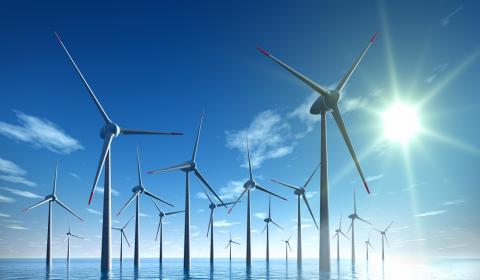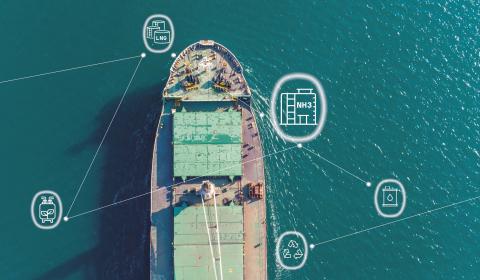
A second wind for renewable energy
With European Union targets for reducing carbon emissions and increasing renewable energy on the horizon, France’s offshore industry is tackling offshore wind projects with gusto.
By 2030, the EU is aiming to have at least 32% of its energy come from renewable sources. To meet this goal, the offshore industry is turning increasingly towards wind power.
In Europe, there were over 3.5 GW of total installed capacity for offshore wind in 2019, accounting for more than 15% of the continent’s total offshore installed capacity. In France especially, a range of offshore wind projects are under construction, bringing new challenges to owners, operators and class societies.
Floating wind projects on the rise
Several major offshore wind projects are underway in France, as consortiums shape the French offshore wind industry. The first wind farm under construction is located in Saint-Nazaire, and will consist of 80 offshore wind turbines generating 480 MW. Subsea power cables are already being installed, and manufacturing is underway for various components of the foundation and turbine.
EDF is working on a further three wind farms, each having a total installed capacity of 500-600 MW, which will be built along the Channel at Courseulles, Fécamp and Dunkerque. A total of 7 wind farms will be built in French coastal waters, with a final installed capacity of 3.6 GW. This represents a major step towards achieving France’s policy goal of having 6.2 GW of offshore wind capacity installed by 2028.
Another major aspect of France’s push for renewable energy is the development of four pre-commercial floating offshore wind farms on the French coast. In particular, the Provence Grand Large project strives to demonstrate the technical and economic feasibility of offshore floating wind devices for high-rated wind turbines. Launched in 2010, this project aims to identify and demonstrate the innovative technologies that will support floating wind turbines in harsh environments and at a wide range of water depths.
Challenges ahead for wind
Offshore wind energy will be key to the future of power generation, and the industry is continuously looking for a breakthrough. For floating wind projects, there are numerous technical concerns for each step of a project. Bureau Veritas experts are involved in several R&D projects, as well as numerical tool development for fixed and floating wind. We are committed to improving the assessment of critical design aspects such as dynamic cable behavior and load modeling for floating wind components. Our goal is to limit the costs of wind farm construction and operation, while helping define the future of offshore wind technologies.
Moving towards a cleaner future
Bureau Veritas is helping owners steer through these challenges with NI 572, our guidelines for the classification and certification of floating offshore wind turbines. As France’s offshore industry powers through the energy transition, Bureau Veritas is working side-by-side with wind farms owners, project developers, technology designers, and test centers to determine the future of energy generation and consumption. We are providing support and assessments, certifying the innovations that will bring the offshore wind industry to all-new levels of safety and efficiency.










